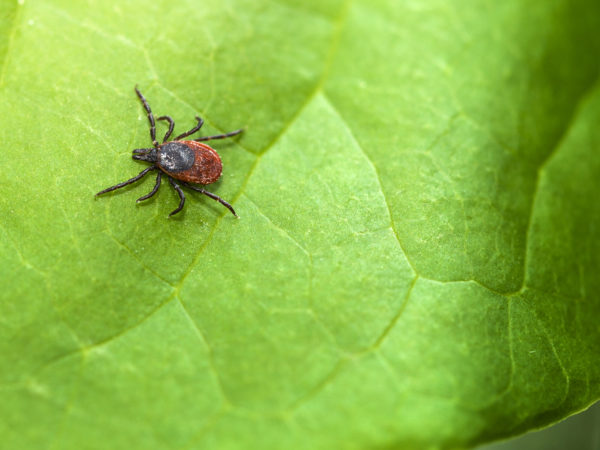Fight Fleas And Ticks Naturally

Ticks are opportunists. Young ticks will wait weeks for some warm-blooded creature to come along, and when they find it, they hop on and attach themselves to the skin, or even climb into ears. In order to lay eggs, they must fill up on the creature’s blood; then they drop off. In addition to the discomfort they cause an animal, they also may carry serious diseases that can be transmitted to humans like Lyme Disease and Rocky Mountain Spotted Fever.
To prevent a tick infestation, brush your animal well before venturing out into known tick habitats, like open fields or forests. Remove as much loose hair as possible, and treat the coat and skin with a natural flea and tick repellent (see below). Work it in as well as you can.
Once you return home, check your pet’s body for ticks by using a fine-toothed flea comb. They will be evident as tiny black spots, and you may find the area around them raised or inflamed. If there aren’t too many of them, you can pick them off manually with a pair of tweezers. Grab them as close to the skin as possible, and slowly but firmly pull gently to eject them. Pulling slowly is key; if you pull too quickly you could dislodge the body without the head. (Not a big deal, but may lead to more inflammation.) If you find a large number of ticks or find them hard to remove, contact your vet immediately.
Fleas can be a nuisance, especially if your home has pets that frequently go outdoors. To treat your animal companions, an effective natural product is Flea N’ Tick Be Gone, which is based on plant enzymes. If you want to get rid of fleas in your home, you can try pyrethrins, the active insecticidal ingredients found in chrysanthemum extracts. These will kill the fleas, degrade rapidly in the environment and are relatively nontoxic to humans (although they can aggravate asthma). Neem, a powerful insecticide obtained from a tree in India, is also an option, as is diatomaceous earth – the fossilized “skeleton” of a one-celled sea algae often used by organic farmers to kill insects. Try sprinkling it on carpets, furniture and areas where fleas tend to hide.
In his book “Natural Health Care for Pets,” Dr. Richard Pitcairn shares a simple flea repellent recommended by Anitra Frazier in her book “The Natural Cat.” It’s ideal for use just after you give your pet a bath. Boil 1 pint of water and add 1 teaspoon of dried rosemary (or 1 teaspoon fresh). Let this steep for 10 minutes and strain. Cool until it reaches body temperature, then pour over your pet’s coat, rub it in, and dry as usual. This will not only repel fleas, but will give your animal a glossy coat, as well.
Read more articles on Pets and Pet Care.









